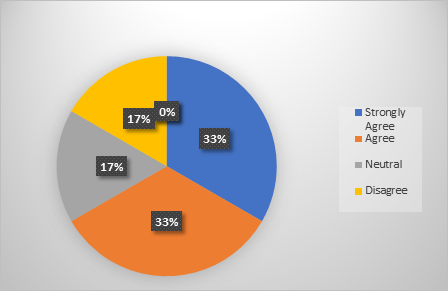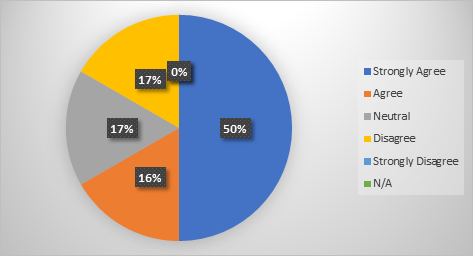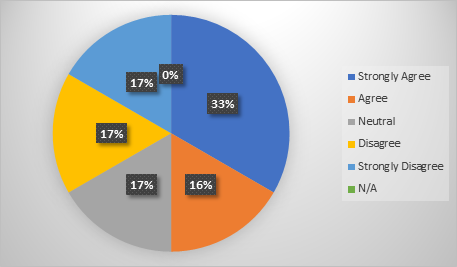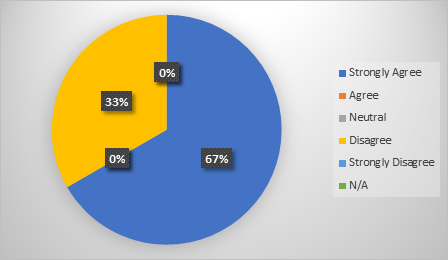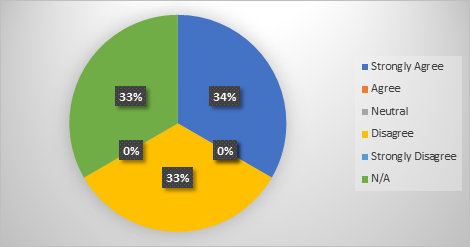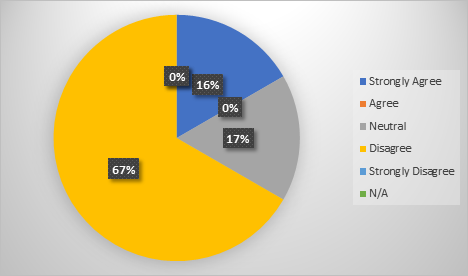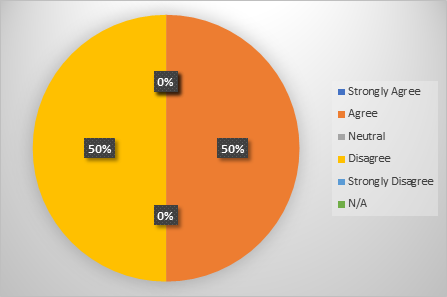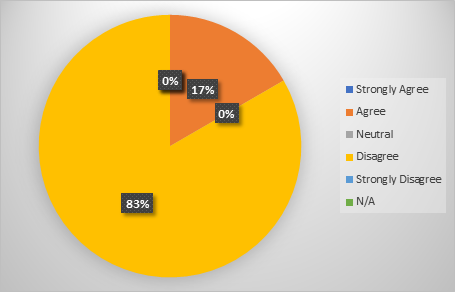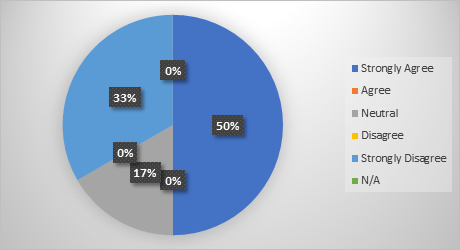INTRODUCTION
Over the past century, the transformation of the educational system due to emerging technologies and digital learning environment have been everywhere and has become an integral part of our daily lives. Today, individuals who are learning foreign languages have a wide range of tools and resources at their disposal on the internet, thanks to digital technology such as computer-assisted language learning (CALL). Modern devices and apps make it much easier to teach and learn languages for different purposes like finding information, communicating, and checking spelling. In education, digitalization makes it easier to access materials and resources. However, teachers now have to deal with new challenges. They need to find digital resources that fit their teaching style and develop activities that work well with modern language classrooms. Both teachers and students need to get used to using new technology (Ostanina, 2018). Nowadays, it is essential to implement technology in an educational context. There are too many digital platforms that support English teachers in creating material to change the focus of the classes and positively improve the learning environment. Technology allows learners to acquire English as a Second Language as well. At this point, creating digital content to teach them the four skills is too influential (Vonog et al., 2021).
Educational platforms have a great importance and benefits in digital learning. Using these resources to develop digital content is paramount to accomplish the teaching-learning process. Technology helps students learn better through virtual classrooms. This means people can learn in ways that work best for them. (Ketabi, 2017). With technology, students learn skills they will need for jobs in the future, like using computers and working with others. We can also track progress and give personalized feedback. As Joshi (2023) points out, by using technology, we can adapt to how students learn and come up with new ideas, making learning fun and helping students do well in their learning journey. Also found enhanced accessibility and inclusivity, development of future-ready skills, enhanced engagement and motivation, data-driven education, streamlined administrative processes are important in the digital learning stage.
In Ecuador since Covid-19, digital learning has taken a significant place in the educational environment. Each educator has had to embrace technology to carry out their duties. We, as teachers, found ourselves in this transition to a virtual format and introduced innovative teaching approaches to facilitate effective online lessons (Ahern, 2021). This was presented to us with a significant challenge. A considerable number of educators had to navigate teaching without the necessary training and technology. Since then, technology has transformed into an essential component of daily life for all of humans (Benalcázar et al., 2021). In the Ecuadorian educational system, most teachers did not get the proper training due to their disruption. Most of the senior teachers have taken digital learning negatively, they see technology as a risk. On the other hand, some teachers manage technology but do not like to use educational platforms. They are just concerned about fulfilling the courses that they are asked to teach. There is a low percentage of English Teachers in Public institutions who are committed to implementing digital learning in their teaching methodologies (Castañeda & Jaime, 2021). At the same time, it is fundamental to mention the economic issues that learners dealt with during their virtual modality. To carry out the virtual classes you need to get some technological resources such as the Internet and electronic devices. And not all Ecuadorian families have this kind of benefit at home. Sometimes, there is only a digital device such as a tablet or cellphone being used by three students in the house. In addition, mental health in humans is the most important thing to live healthily. If we are not fine, we cannot develop our jobs and studies correctly. Most of the humans during the virtual classes used to stress caused by the number of activities. We were obligated to evidence our work and assignments daily (Carpio & Suing, 2022).
In Ecuador since 2016, the MeCapacito virtual Moodle Platform has been used to train teachers in Ecuador. This platform aims to improve access to training programs through online tools and other resources, reaching a large number of teachers. They only need to register, because these courses have no paying. MeCapacito has expanded teacher training and has reached thousands of teachers in Ecuador's public education system. Over one and a half million teachers have participated in training programs across different subjects (Plataforma Mecapacito - Ministerio de Educación, 2022). However, if teachers do not take advantage of the resources and the benefits given by the Ecuadorian government through Ministry of Education, we will not see improvement in the Education System due to lack of compromise, responsibility, dedication to our teaching practice (Tondeur et al., 2017).
The first step to solve the challenges and limitations that digital learning requires is notice that teachers play a key role in using technology to enhance learning. That is why teachers must develop digital skills to teach effectively in today's digital age (Bond et al., 2018). It is essential to develop the teaching online EFL lessons to carry out digital learning adequately. For this, it is too helpful follow a type of timetable and teaching plan to achieve the learning goals. The most important aspects of online teaching are: select your platform and teaching tools, technological needs, online privacy and safety, training, space, and resources. learning objectives, establish a routine, provide instructions, classroom management, student participation, in-class group work, grading, and progress testing. (Cambridge, 2020). The purpose of this research is to evaluate the online learning elements that guarantee the effectiveness and quality of virtual education. By employing a combination of assessment methods, from online testing to engagement analysis and personalized feedback, educators can monitor student progress, identify areas of difficulty, and provide the support needed to promote meaningful, lasting learning. Furthermore, effective assessment and monitoring of online learning allows educators to can modify their teaching techniques to fit the specific requirements of pupils, therefore creating an inclusive and engaging learning environment in today's digital context. Ultimately, by prioritizing the assessment and monitoring of online learning, educational institutions can maximize the potential of digital education and prepare students to succeed in an increasingly digitized and globalized world (Alrefaie & Hassanien, 2020).
THEORETICAL FRAMEWORK
Digital Learning
Digital Learning is all types of technology learning practice. Digital Learning has replaced traditional curriculum such as textbooks and traditional classroom setups. Nowadays, we use e-books and online resources. It allows students to have no stress and time limitations of being in a classroom and having to follow any schedule or classroom rules. In addition, commuting and reducing transportation costs are a big part of the benefits of digital learning. Kim et al., (2022) affirms that “Digital learning in scientific education offers various advantages, including increased engagement and motivation, enhanced accessibility, personalized learning, collaborative learning, and gamification”. The difference between online learning and digital learning is that online learning can be created by teachers for students to accomplish assignments through their investigation and receive feedback from their teachers within a time established or due date. On the other hand, digital learning allows you to do assignments also, use apps, platforms, and gaming to accomplish a project or other task.
Teaching in a Digital Environment
In short, digital learning uses technology to enhance the learning experience by offering great instruction and engaging content. It lets teachers give feedback, allows learning anytime, anywhere, and tailors teaching to each student's needs. The key benefit is the variety of ways teachers can present content, giving students lots of options for how they learn (Fauzi, 2023).
Integrating digital learning in the classroom is because this generation is technology experts and was born to embrace a new way of learning. It is the best way to motivate our students. To be active, participants in our virtual classroom. They can always feel free to suggest new ideas or resources that are out there in numerous apps or platforms (Unesco, 2024).
Development of digital educational content to teach the four skills
Language instructors have long employed the notion of four fundamental language skills: listening, speaking, reading, and writing. These four linguistic skills are also referred to as "macro-skills". This contrasts with "micro-skills" like as grammar, vocabulary, pronunciation, and spelling (Aydoğan & Akbarov, 2014).
Language educators must implement in the teaching process the use educational platforms to develop the four English skills. Such as listening, reading, speaking, and writing. Technology allows educators create material to develop their classes using these educational tools. Also, these platforms are helpful to English Language Learners, they can practice and learn in an interactive way. For that, we want to provide some essential information about educational platforms that are helpful in the learning and teaching process developing listening and reading (Receptive Skills). For example: Listening: BBC Learning English, Voice of America, British Council - Learn English, YouTube; Reading: ReadWorks, Newsela, CommonLit, Khan Academy, Quizlet.
Now, it is important to highlight the platforms that we can use to teach speaking and writing (productive skills). For example: Speaking: Google Meet, Zoom, Flipgrid, SpeakPipe, Tandem Language Exchange; Writing: Grammarly, Hemingway Editor, Writing Prompts Websites, Write & Improve, PeerGrade.
Asynchronous and synchronous teaching and learning strategies
Online learning uses advanced tools that are sensitive to learners' needs, allowing them to use tools that fit their own way of learning. Creating a personalized learning environment like this is something modern educational theories focus on. Recognizing and adapting to different learning styles is crucial today, as it helps meet individual needs and preferences in the learning process (Shahabadi & Uplane, 2015).
Asynchronous strategies involve delivering educational content non-simultaneously, allowing students to access and participate on their schedule. Providing them with flexible hours and access to study from anywhere they would like. The strategies that we use allow students to develop strong language skills. These strategies prepare them to overcome challenges in their learning path. Students can share ideas at their convenient time. They have access to online material, resources such as videos, reading, and interactive activities allowing for self-directed learning (Mohammadi, 2023).
On the other hand, synchronous strategies involve real-time interactions between students and educators, facilitating collaboration and the exchange of ideas in real time. This type of learning provides connection and hands-on in real-time. the resources that are provided in real-time virtual classes through video conferencing. Students also can receive live classes and actively participate. They can ask questions and have real-time discussions. Educators can give individualized support through tutoring sessions. Students can work in groups on projects and assignments using online communication and collaboration tools to work effectively (Rochina & Cortezo, 2022).
As Amiti (2020) point out “asynchronous and synchronous teaching and learning strategies offer unique benefits in the current educational environment. Asynchronous strategies provide flexibility and autonomy, allowing students to manage their time and pace of learning”.
Assessment through technology
Checking how well students are doing and keeping track of their progress in online classes is really important. This helps us see how they are doing, figure out where they need help, and make sure the education they are getting is good. We do this by using different ways like tests, assignments, looking at data, and giving students feedback that fits them personally. Doing this well helps students learn better and do well in their online classes (Oludare et al., 2012). As Bui (2022) points out, some elements that we can use for assess using digital learning:
Online Tests
Learning platforms such as Moodle or Blackboard allow the creation and administration of online tests, which can include multiple choice, true/false questions, and essays.
Digital Tasks and Projects
Students can complete practical tasks, such as essays, presentations, or research projects, using digital tools such as Google Docs, PowerPoint, or video editing tools.
Analysis of Participation and Activity
Educators can track student participation in online discussions, debate forums, and collaborative activities using analytics tools built into educational platforms.
Personalized Feedback
Educators can provide individualized feedback to students through written comments, and audio or video recordings, highlighting areas of strength and suggestions for improvement.
Some limitations of digital learning according to parents and the public are worried about how technology affects students' health, especially children who are more vulnerable to its negative effects. Scientists are still studying the potential harm from prolonged technology use. Spending too much time on computers can disrupt sleep, making it harder to fall asleep and shortening sleep time. The light from screens can also interfere with the production of melatonin, a sleep hormone. Certain content can cause physical and psychological arousal, making it even harder to sleep. Interactive activities like video games can affect sleep more than just browsing social media. Lack of sleep can lead to anxiety, depression, and lower self-esteem in teenagers (Kuznetsova & Azhmukhamedov, 2020).
METHODOLOGY
This study is framed by a quantitative survey that was designed, explaining why certain methods were chosen based on theoretical and practical reasons. It discusses why specific data collection and analysis methods were selected, and how ethics, reliability, and validity were considered. It also describes how data was collected and analyzed in the study (Lo, 2023a). This research relies on gathering data that can be quantified, typically through different instruments. In this article we use a quantitative methodology that was used for various reasons of the learning process. Analysis was also conducted to measure the impact of different variables to define the engagement and experience of digital users of these methods. By this method we can get a better understanding of the effectiveness and usability of digital learning. As Mwita (2022) points out, “The analysis of a methodology must be carried out by the following factors: Sample, data collection and processes. ethics, reliability, and validity.”
In this survey, 30 teachers were taken into consideration. The participants are all ESL high school institutions having at least five years of experience in the field of education as a control of this variable. There are 10 males and 20 females from Ecuador as a control of nationality for this variable.
In this study, a survey has been chosen as a method of data collection. It has been decided that this survey was going to give us more accurate experiences due to the questions that were asked of the teachers in this field. This allows participants freedom to answer questions therefore we were able to have an improved comprehension of digital learning process. This investigation began by inviting participants through an open advertisement posted in teaching groups on social media within the institution where the study was conducted. The advertisement included basic details about the study and a short demographic survey for applicants. Potential participants were then manually screened based on specific criteria outlined earlier (Lo, 2023b).
Before taking any data collection a couple of ethical concerns were taken into account, First the anonymity of the participants to ensure their privacy to their sensitive information. Only authorized researchers had access to the information. We acknowledge their rights such as religious, cultural, and personal beliefs.
As has been discussed above, several factors may impact the reliability and validity of such research. We had to carry out our research based on a survey using a quantitative method. As a result, we performed a valuable database given by the teachers. Finding the percentage of this study as a result. As a validation the potential role that each participant took place was essential.
RESULTS
Survey
1. Do you implement strategies to encourage active student participation in a digital learning environment?
2. Do individual students progress managed and monitored in a digital environment?
3. Do you think digital learning can provide more flexible learning opportunities for students?
4. Do you think digital learning can promote autonomy and self-regulation in students?
5. Do you believe that, in terms of educational quality, online learning can be just as successful as in-person learning?
6. Do you believe that it is simple to modify digital learning to meet each student's unique needs?
7. Do you believe that the efficient delivery of educational content may be enhanced by digital learning?
8. Do you disagree that access to education may become unequal as a result of digital learning?
9. Do you think that social interactions between students and professors can be hampered by digital learning?
10. Do you think that using digital learning can make education more accessible?
In this survey, we aimed to gauge educators' perspectives on various aspects of digital learning. Participants were asked a series of questions. Each question was rated on a scale ranging from "Strongly Agree" to "N/A," allowing for a nuanced understanding of educators' opinions. Let's delve into the results of each question:
33% of teachers strongly agree to implement strategies to encourage active student participation in a digital learning environment.
16% of teachers agreed that individual students' progress is managed and monitored in a digital environment.
50% of educators strongly agree that they think digital learning can provide more flexible learning opportunities for students.
17% of educators strongly disagree, agree, and are neutral that digital learning can promote autonomy and self-regulation in students.
33% of educators disagree that, in terms of educational quality, internet learning can be just as successful as in-person instruction.
34% of educators vehemently disagree that it is simple to modify digital instruction to meet each student's unique needs.
6% of teachers strongly disagree and think that digital learning can improve efficiency in the delivery of educational content.
50% of educators agree and disagree with the notion that digital learning can generate inequalities in access to education.
83% of teachers disagree with the idea that digital learning can hinder social interaction between students and teachers.
17% of educators felt neutral and consider digital learning to be an effective tool to improve accessibility to education.
The survey results provide an outline of the perception of teachers from different high schools on the importance of how beneficial is to introduce digital learning to teach English as a second language. Below is a summary of the main findings according to the response percentages.
DISCUSSION
The query on whether education through technology will compete with or perhaps replace traditional education is becoming increasingly popular among experts studying educational issues. Some of these scholars believe that distant education is fundamentally flawed and ineffective. Change in the educational field is unavoidable, but these changes should not disrupt the fundamentals of the educational field in order to preserve the existing educational environment, including direct connection in the triad "student - teacher - parent". We consider that the deployment of new digital technology and digital goods necessitates a modification of old educational procedures, as well as the development of new education technologies that can first supplement traditional education while eventually replacing certain outmoded ways. (Puchkova & Sorokoumova, 2021)
In conclusion, teachers had differing opinions on whether their experience with online teaching was positive or negative. Some found it beneficial, citing access to abundant online resources, which freed up time. However, others felt it encroached on their work-life balance, seeing it as consuming more of their time (Lo, 2023c).














